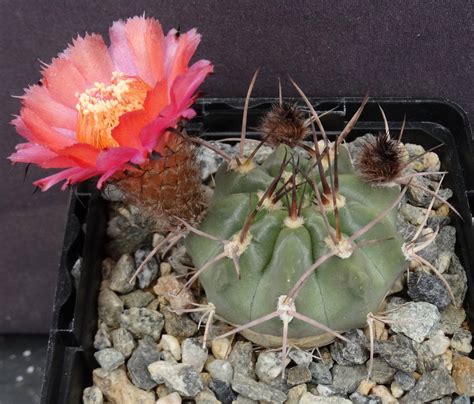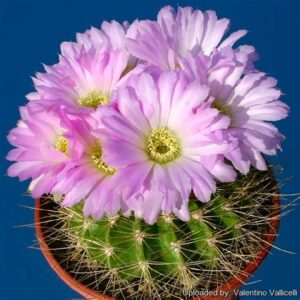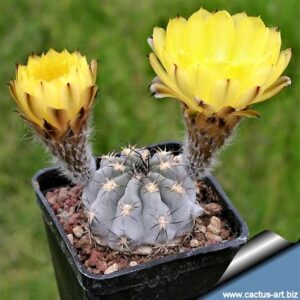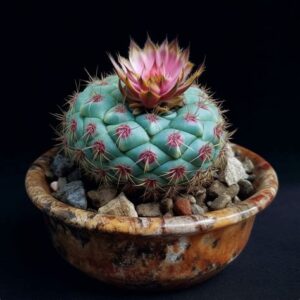Acanthocalycium hoevenii, commonly regarded for its vibrant and spectacular floral displays, represents a captivating choice for succulent aficionados and horticulture enthusiasts alike. This highly sought-after cactus species hails from the arid landscapes of South America, specifically Argentina. Known for its distinctive characteristics and ease of care, Acanthocalycium hoevenii has garnered attention not only for its aesthetic appeal but also for its sustainable culture. This article delves into a comprehensive guide on how to cultivate this rare species effectively, ensuring both health and blooming vigor in your plant.
Before embarking on the journey of Acanthocalycium hoevenii cultivation, understanding the plant’s natural habitat and growth patterns is crucial. With proper care, this cactus can thrive, offering stunning blooms and a unique addition to any collection.
Understanding the Plant’s Natural Habitat
Acanthocalycium hoevenii thrives in the arid regions of Argentina, where it endures harsh conditions. The natural habitat provides critical insights into its cultivation needs. Typically, this cactus thrives in mountainous terrains where it receives ample sunlight and experiences low humidity. The well-draining soil, often composed of rocky or sandy substrates, is fundamental to its growth. When simulating these conditions in cultivation, growers should prioritize the plant’s affinity for dry environments and avoid excessively moist conditions that could lead to root rot.
Key Features and Growth Characteristics
This species is characterized by its ribbed, globular body adorned with spines and blooms in a kaleidoscope of colors. The flowers, often pink or yellow, emerge prominently from the apex, creating a breathtaking floral spectacle. Most notably, these blooms typically open during the daytime, drawing the eyes of both casual observers and dedicated enthusiasts. With growth patterns that showcase both individuality and resilience, Acanthocalycium hoevenii presents an attractive option for any cactus enthusiast.
Essential Factors for Cultivation Success
To nurture Acanthocalycium hoevenii effectively, attention to specific cultivation essentials is paramount.
Soil Selection: The Foundation of Health
Opt for a high-quality cactus mix or create your own blend using coarse sand, perlite, and potting soil. The primary objective is to ensure excellent drainage. A poorly drained medium can lead to catastrophic water retention, ultimately causing root rot. Mixing in small gravel can enhance drainage properties while providing important aeration for the roots.
Light Requirements: Harnessing Sunlight
Position your Acanthocalycium hoevenii in an area that receives bright, indirect sunlight for the majority of the day. While it can tolerate short periods of direct sunlight, prolonged exposure may lead to sunburn and damage to the plant. If cultivated indoors, consider using a southern or western-facing window, supplemented with grow lights if needed. However, acclimating the plant to sun exposure gradually is crucial to prevent shock.
Watering Regimen: Balancing Moisture
Establishing an appropriate watering schedule is critical. During the growing season, which typically spans from spring to early autumn, water the cactus when the top inch of soil feels dry. Use a method known as the “soak and dry” technique; thoroughly water until it drains out of the bottom, then refrain from watering until the soil is completely dry. Overwatering during dormancy can be particularly detrimental, so cutting back on water during the winter months is advisable.
Temperature and Humidity: Optimal Conditions
Acanthocalycium hoevenii thrives in temperatures ranging from 70°F to 90°F during the daytime. Nights can drop to around 50°F, which is beneficial for the plant’s growth cycle. As a desert cactus, it does not require high humidity; in fact, keeping humidity low promotes healthier growth. During the winter months, ensuring temperatures do not drop below 45°F is vital, as prolonged exposure to cold can compromise the plant’s integrity.
Fertilizing for Bloom: Stimulating Growth
Fertilization promotes robust growth and flowering in Acanthocalycium hoevenii. During the growing season, utilize a diluted cactus fertilizer approximately once a month. Formulations with higher phosphorus content will encourage bloom production, which is the crowning glory of this cactus. Always ensure thorough watering after fertilization to prevent root burn.
Potting and Repotting: Creating Space to Grow
When selecting a pot, emphasize drainage. Terracotta pots or plastic containers outfitted with drainage holes are ideal. Initially, a small pot is adequate. Repotting may be necessary every couple of years as the plant matures and outgrows its confines. This procedure not only allows for additional space but also replenishes nutrients in the soil. When repotting, treat the roots gently, and position the plant at the same depth as it was in the original container.
Pest and Disease Management: Protecting the Cactus
Cactus plants, while generally resilient, can face challenges from pests such as mealybugs and aphids. Regularly inspect your Acanthocalycium hoevenii for signs of infestation, including a white, cottony substance that indicates mealybugs. If detected, treatment with insecticidal soap or neem oil is recommended. Additionally, maintaining good airflow around the plant can mitigate the likelihood of fungal diseases, which may thrive in overly humid conditions.
Encouraging Blossoms: Tips for Flowering
One of the most exceptional features of Acanthocalycium hoevenii is its blooms, which can be encouraged with the right strategies. Ensuring the plant is well-fed during the growing season, along with providing adequate light and temperature changes as it approaches dormancy, can promote prolific flowering. Reducing watering in the winter encourages the plant to enter dormancy, which can trigger flowering when spring returns.
Common Buyer Concerns: What to Know Before You Grow
Potential buyers often express concerns regarding the care and maintenance of Acanthocalycium hoevenii. Understanding its specific needs can alleviate many worries. Some common concerns include:
- Difficulty of Maintenance: With the right knowledge, this cactus is remarkably easy to care for, making it an excellent choice for novice gardeners.
- Bloom Production: While some may worry about flowering, optimal conditions greatly enhance the likelihood of blossoms, particularly with adequate lighting and feeding.
- Pest Control: Regular monitoring and care can drastically reduce pest issues, ensuring longevity and health.
- Temperature Sensitivity: Being aware of the ideal temperature range and taking precautions during extreme cold can protect your cactus from damage.
In conclusion, Acanthocalycium hoevenii offers a multitude of benefits and a stunning visual presence within any plant collection. By understanding the nuances of its care and cultivation, enthusiasts can enjoy a flourishing, flowering specimen that enhances both indoor and outdoor gardening environments. With dedication and attention to its specific needs, this extraordinary cactus promises a rewarding horticultural experience.





Leave a Comment